Nov 12, 2025
Nov 12, 2025
Sacred Mountains of India
Continued from Part LXVII
In the earlier parts, we have seen how the Sanatana Dharma (Hinduism) laid emphasis on acceptance, empathy and peaceful co-existence of all creations of the nature and Universal God since the Vedic age as against the conventional wisdom and belief system of some of the later Abrahamic religions which emphasize that everything else (i.e. other than human beings) in the world has been created for the use or consumption of the faithful of the particular God. Due to the aforesaid considerations, Hindus remember all useful objects such as plants and animals, and even inanimate objects such as Sun, Moon, Stars, Planets, rivers, mountains, hills, ocean, and so on, with gratitude and reverence. Many of these useful objects and forces of nature have been even deified and worshipped. In the previous parts some of such plants, animals and rivers have been dealt with and in the present piece, the author proposes to deal with the hills and mountains that have traditionally attracted attention of Hindu masses due to their conventional use or reverence following the mythological tales attached with them.
Mountain Ranges of India
The Indian continent is separated from the rest of the Asia through the mountain ranges that include some of the world’s highest mountain peaks and roads. By virtue of terrain and many impregnable areas, the mountains have remained a source of curiosity and mystery for ages as also abode of many tribes and mythical creatures finding mention in the ancient literature and legendary tales. Although this is not the main topic and theme here but as per Hindu belief system many deities and deified places are located in these mountains, hence it appears reasonable that various mountain ranges are also briefly but comprehensively explained here. In essence, India is the home of seven major mountain ranges with hundreds of peaks with the height of 1000 metres and above as briefly enumerated in following paragraphs.
1. Himalayan Range:
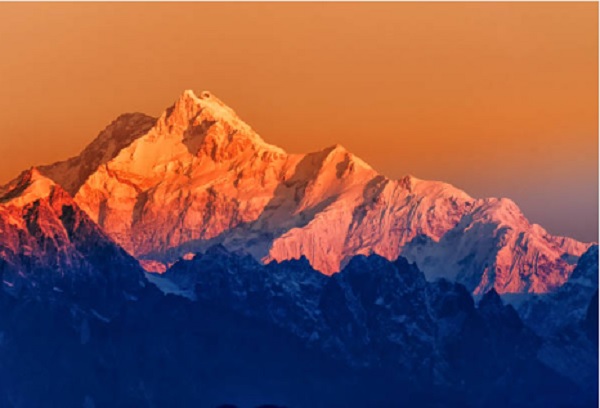
It is the most famous, largest, longest and highest mountain range of India, which is also the home of almost all largest peaks of the world. Himalayas literally translates to the “abode of snow” in Sanskrit and among many other useful things it also largely regulates the climate of the Northern India. It is mainly on account of this mountain range that India is separated in north, east and west from the rest of the Asia. Besides, the Himalayas is also considered the youngest mountain range and a source of all mighty rivers of India such as Sindhu (Indus), Ganga and Brahmaputra rivers. The highest peak Mount Everest at 8848 metres lies in the Himalayan range in Nepal; and Nanga Parbat and Namcha Barwa are the western and eastern points of the Himalayas, respectively. Himalayas has also been personified and deified in many legendary tales in the Indian texts.
2. Karakorum and Pir Panjal Range:
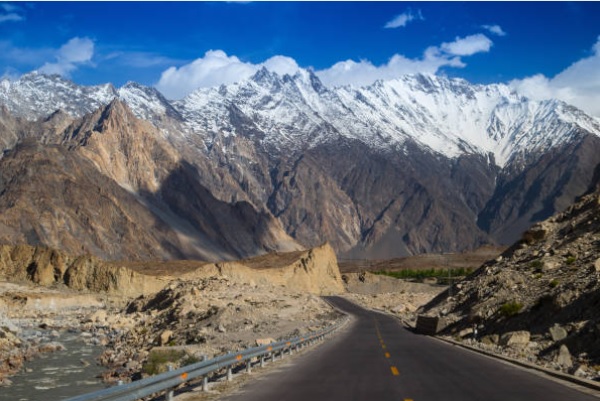
This range lies to the north-west and south of Himalayas. The Karakorum Range is spread over about five hundred kilometers and is the home of some of very large peaks of world including K2, the second highest peak at 8611 metres. It also contains some of the largest glaciers of the world including famous Siachen glacier and further north-west it extends into Afghanistan as Hindu-Kush range. Often identified as lower Himalayas, the Pir Panjal range is located south to the Himalayas from Himachal Pradesh to north-west Jammu and Kashmir and is a source of rivers like Ravi, Chenab and Jhelum.
3. The Satpura and Vindhya Range:
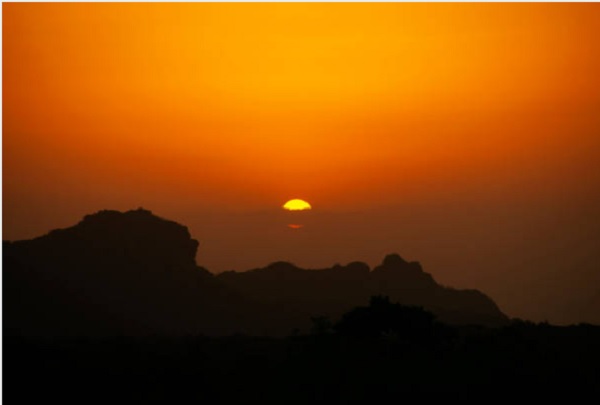
These ranges run through the Central India almost parallel to each other in the states of Madhya Pradesh and Maharashtra with small extensions in Uttar Pradesh, Gujarat and Chattisgarh as well. Satpura Range is also a source of the west flowing rivers like Narmada and Tapti. The ranges have many religious spots and tourist attraction such as Panchmarhi Hills, Kanha National Park, Amarkantak and Omkareshwar Temple; Vindhya Range also finds a mention in Indian mythology and personified in a legendary tale. Kalumar Peak (753 m) in Vindhya and Duphgarh Peak (1350 m) in Satpura are the highest peaks in these ranges.
4. The Arawali Range:
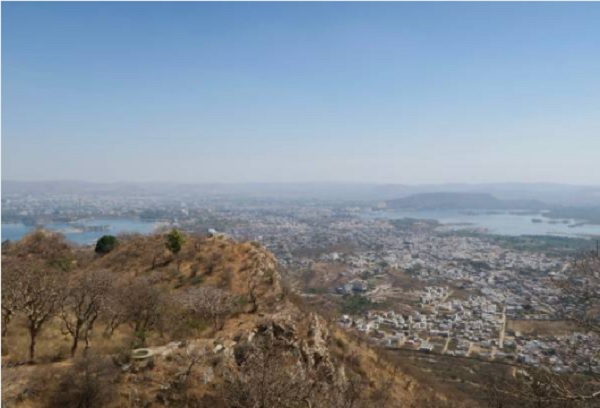
This is considered to be the oldest mountain range not only in India but most likely in the world as well. The Arawali Range extends to about 800 kilometres with a width of approximately ten to hundred kilometers through the states of Delhi, Haryana, Rajasthan and Gujarat. Several spots in the range are identified as tourist and religious places including Mount Abu in Rajasthan and Guru Shikhar is the highest point with an estimated height of 1722 metre.
5. The Eastern Mountain Range:
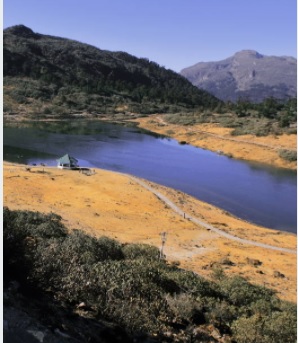
In a way, this is an extension of Himalayas only in the eastern part of India with consistently with much lower heights. This is also known as Purvanchal Range comprising of a chain of hills, namely the Patkai-Bum Hill, Garo-Khasi-Jaintia Hills and Lushai Hill. This range extends through all the seven states of north-east namely Assam, Nagaland, Mizorum, Manipur, Meghalaya, Tripura and Arunachal Pradesh, popularly known as seven sisters.
6. The Western Ghats:
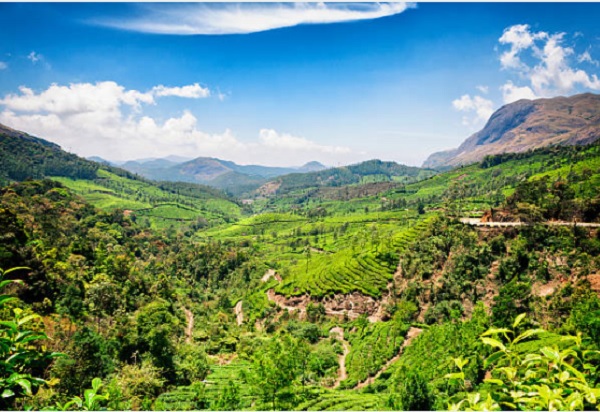
Also known as Sahyadri Mountains in someplaces, this range runs from Maharashtra in the west to Kanyakumari in Tamil Nadu at the southern tip. The range covers the states of Maharashtra, Goa, Karnataka, Kerala and Tamil Nadu with three mountain ranges Nilgiris, Anaimalai and Cardomom. The Western Ghats have been declared as UNESCO World Heritage owing to its rich biodiversity; it has several places of religious and tourist attraction including Jog falls, Ooty and Bandipur National Park. Besides, important rivers of South India such as Godavari, Krishna and Kaveri originate and flow through this range.
7. The Eastern Ghats:
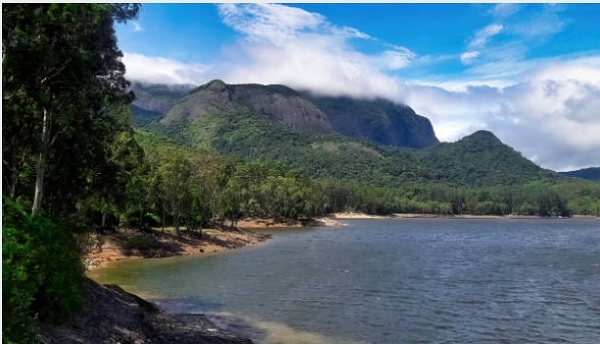
The Eastern Ghats are a mountain range of lower elevation running in the eastern part of the Indian Peninsula almost parallel to the Bay of Bengal. The states covered under this range are West Bengal, Orissa, Andhra Pradesh and Tamil Nadu. The Eastern Ghats Range is old compared to the Western Ghats, the Arma Konda being the highest peak with a height of 1680 metre and the Range is also a location of many important pilgrimage places including famous Tirumala Venkateshwara Temple. Rivers Godavari, Mahanadi, Krishna and Kaveri originated in Western Ghats run through this range creating large fertile land before terminating into the Bay of Bengal.
Sacred Mountains and Attached Legends and Myths
As is evident from the aforesaid description, the mountains and hills have been an integral part of the Indian sub-continent since the ancient age. They not only constitute a significant part of the Indian geology comprising of its topography and terrain but are also witnesses of the many philosophical and metaphysical legacies of the ancient India since Vedic age often wrapped in mysteries, enigmas and riddles. It is not possible to individually explore and explain all such occurrences in this short piece; hence author has endeavoured to briefly mention a few more important sacred mountains/hills, associated details and legends attached, if any.
1. Giriraj Himavat and Mount Kailash
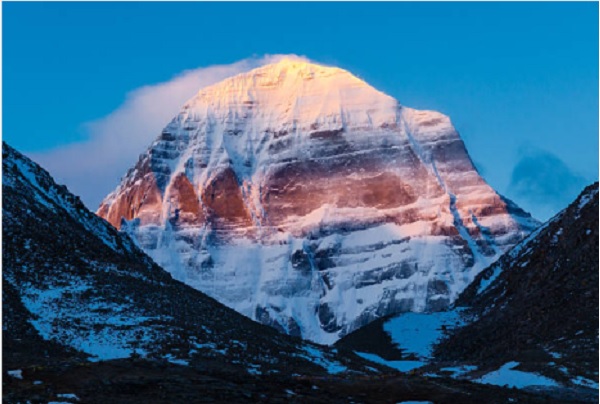
The Himalayas have traditionally enjoyed an important place in Hinduism since Vedic times and have been personified by devout Hindus as the king of all mountains. In ancient literature and some scriptures, it is variously mentioned as Giriraj Himavat, Himavan, Himavant, Himaraja, Parvateswara, and so on, whose consort was the queen Menavati or Mainavati, the daughter of Mount Meru. In the epic Mahabharata, Himavat finds a mention as the ruler of the Himalayan Kingdom, who was the father of the river goddess Ganga symbolizing purity and forgiveness, and Shiva’s wife Sati/Parvati, also known as Uma or Gauri, the goddess of beauty, love, marriage, fertility and harmony. The post-Vedic texts such as Puranas, Ramayana and Mahabharata contain several legendary tales associated with Giriraj Himavat, and his daughters Parvati and Ganga. In these tales, the goddess Parvati is depicted as reincarnation of Sati, who was the first wife of Shiva, who sacrificed herself during a yajna (fire-sacrifice) after being insulted by father Daksha.
The Himalayas Range has many places of cultural and religious significance for the Hindus, and Buddhism, Jainism and Sikhism as well. Among the most sacred places for Hindu pilgrimage are Pashupatinath and Muktinath temples in Nepal with Shiva and Vishnu, respectively, as the chief deities. From the cultural and religious point of view, the most important place in Himalayas is Mount Kailash, a high peak in the Kailash Range of the Tibet Autonomous Region of China; the place is considered permanent abode of God Shiva, Goddess Parvati and their children, Kartikeya and Ganesha. It is located near the Mansarovar and Rakshatal lakes. According to a legend associated with Mount Kailash, the Rakshasa King Ravana tried a passage through it on Pushpak Vimana after defeating and subduing his step brother Kuber of Alakapuri but his chariot could not fly over it. Ravana encountered Shiva’s attendant Nandi, who informed him that the place belongs to Shiva and Parvati, and no one is allowed to trespass it. The altercation between two led to a curse from Nandi and infuriated Ravana attempted to uproot the Mount Kailash. As Kailash started shaking, the omniscient Shiva realized that Ravana is behind it; so he pressed the mountain with his right big toe trapping the Rakshasa king beneath it. It was only after a long penance by him that Shiva forgave and even granted Ravana an invincible sword. Here the seated form of Shiva is known as Ravananugraha in Mount Kailash.
In the epic Mahabharata too, a legendary story relates to the Pandavas and Draupadi trekking to the Mount Kailash area in their final quest to liberation. Traditionally, thousands of pilgrims of the Indian religions, mostly Hindus, visit Kailash every year but as the place falls under the Chinese occupation, only a limited number of people are allowed to visit the place. Apart from Mount Kailash, there are other great mountains like Gandhamadana, Jarudhi, and Sambwartakka in the area which is a place of origin of the great Brahmaputra River and other water streams. According to yet another legend, the Sage Shantanu and his wife Amogha had a child with the blessings of Lord Brahma, who took the form of water. Placed in the middle of the aforesaid four great mountains, he grew into a great lake, the Brahmakund. The legendary Kshatriya slayer, Sage Parashuram, had committed the grave sin of killing own mother with an axe under the instructions of his father and, consequently, the axe got permanently stuck up in his hand. At the advice of wise sages, he atoned by visiting several holy places and finally he took holy bath in Brahmakund. At the request of people, he axed down one side of the mountain releasing water from the lake into the River Brahmaputra, the blood from the axe washed up in the process giving the water a reddish tinge; hence the name of the river “Luit” (= Blood) in Assamese.
2. Vindhayachal and Sage Agastya
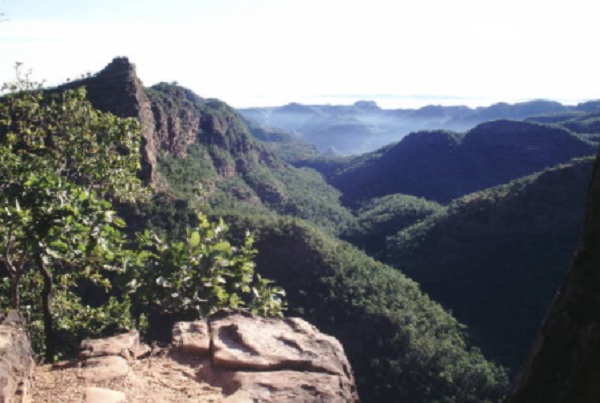
The Vindhayachal or Vindhya is a complex and discontinuous chain of mountain ridges, hill ranges, highlands and plateau in the west-central India. As mentioned earlier, two ranges of low hills namely, Satpura and Vindhya almost run parallel to each other. Of these, Vindhyachal has great significance in Indian geology as well as mythology. The Vindhya Range is considered as the traditional boundary between the northern and southern India. In spite of the fact that Vindhaya Range is not so high but it was considered highly inaccessible and risky due to dense vegetation and hostile tribal groups in the region since ancient times, which are describes as demons and cannibals in ancient texts. In the greatest Indian Epic Mahabharata, Vindhyachal is also mentioned as the abode of goddess Kali or Durga described as Vindhyavasini (Vindhya dweller) with a temple dedicated to her in the Vindhyachal town of Uttar Pradesh. Besides, after Himalayas, Vindhyachal is another mountain which has been liberally personified in some famous tales of the Indian mythology.
According to an ancient legend, once Vindhyachal had a ferocious rivalry with Mount Meru in growing so high that it even nearly obstructed the sun. In the Indian Puranas, Mount Meru has been variously glorified and identified with Mount Kailash but, according to some modern age scholars, the Mount Meru or Sumeru is represented by the Pamirs in the northwest of Kashmir. Besides, apart from the Himalayas, only Vindhya Range finds a mention in the national anthem that truly reflects its significance in Indian culture. According to this legendary tale, once Sage Narada was travelling when he observed the grandeur of Vindhyas located in Central India. He was impressed with its beauty, and flora and fauna supported by it but true to his nature, he decided to play a prank on the mighty Vindhyachal. Hence while appreciating its glory as a great mountain, he left out a sigh of little grief and unhappiness. So, while thanking the sage for his appreciation, the nervous and worried mountain enquired about the reason of his unhappiness.
After initial pretension, Narada told him that despite qualifying all requirements he was still not the greatest mountain because Sun carries daily Pradakshina (go around) of Mount Meru rising from the east and going around it to set in the west. From more enquiries, he came to know that Mount Meru is the abode of Lord Brahma and is the tallest mountain on date. After the sage left, Vindhyachal confronted Sun and ordered him to do his Pradakshina on the pattern of Mount Meru. However, Sun declined his command citing the age old tradition since the formation of planets and the tallest stature of Mount Meru. Consequently, the furious Vindhyachal started growing taller and taller leading to a stage when it even started obstructing the view of Sun from the earth. Thus worried Indra, the king of Devas, requested Sage Agastya, Vindhya’s Guru, for his immediate help to save the life on the planet which would perish in the absence of sunlight. Agreeing to his request, Sage Agastya and wife Lopamudra decided to take journey southward and asked already too much grown mountain to give passage to his family. In reverence, Vindhyachal bowed and downsized himself again to facilitate the smooth transit of the sage who also took his commitment to stay put unaltered till he returns back. Following the event, Sage Agastya established his Ashram in South India and never returned to the North India again and true to his words Vindhyachal did not grow further.
3. Nanda Devi
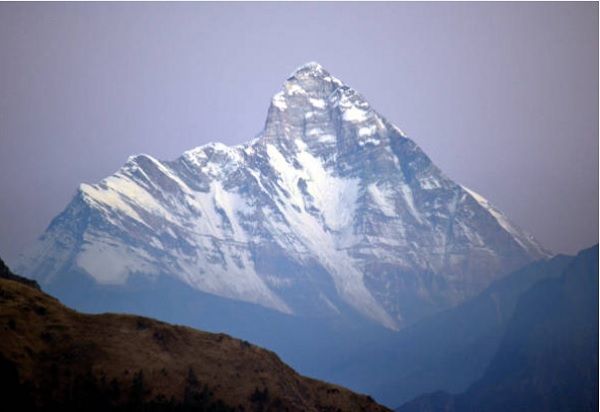
Nanda Devi is the second highest mountain peak of the Himalayas in the Indian territory following Kangchenjunga which is higher but on the border of India and Nepal. It is situated in Chamoli Garhwal district of Uttarakhand state, between the Goriganga valley on the east and the Rishiganga valley on the west. The name itself implies “Bliss-giving Goddess”, who is the patron deity of the Garhwal and Kumaun region in the Himalayas. Acknowledging its religious and ecological significance, the peak and the circle of the high mountain surrounding it has been declared as the Nanda Devi Sanctuary by the Indian Government minimizing access to the local populace and climbers since 1983. Two peaks in the region together are referred to as the peaks of goddesses Nanda and Sunanda who are worshipped together and find a mention in the Bhagavad Purana.
According to a folklore, Nanda was a beautiful young princess and daughter of the Chanda Dynasty of Chamoli and a wicked Rohilla prince had evil eyes on her. When her father refused to give her in marriage, he attacked the Kumaon kingdom and defeated the king. When the evil prince tried to violate her chastity, she ran for her life to escape his dirty designs. In the process, Princess Nanda climbed up to the snowy peak to save herself and got merged with the holy mountain. In due course, the mountain came to be revered as a temple for Nanda Devi and she was deified as patron goddess in the region. Out of the two peaks, the western one is higher and is called Nanda while the lower eastern is Sunanda, her sister. The goddess is believed to be an avatar of Durga and every festival and family event in the region is expected to begin with the offerings to the goddess. Yet another legend in the region relates to Hanuman’s picking up of Sanjeevani herb at Dunagiri Mountain without goddess’s permission and her wrath; consequently, Hanuman’s shrines do not exist there.
4. Mount Abu

Mount Abu, also known as Abu Parvat or Arbuda Mountain, is a hill station on the rocky plateau of about twenty-two km long and eight km wide in the Arawali Range in Sirohi district of Rajasthan state. The highest peak at the hill station is Guru Shikhar which is often remembered as an oasis in the desert due to its plentiful greenery, streams, waterfalls, and so on. According to a legendary tale, a serpent named ‘Arbuda’ had once saved the life of Nandi, Shiva’s attendant; hence the mountain was named Arbudaranya, which in due course became Mount Abu. According to some Puranic narratives, the Sage Vashistha had shifted to the southern part at Mount Abu after his prevailing differences with Sage Vishvamitra turned into serious conflict.
Sage Vashistha is said to have carried out a great yajna at the peak of the Mount Abu to seek assurance of deities for the security and protection of the righteous people on the earth. Following his prayers, a youth is said to have emerged from the fire-alter (Agnikunda), who established the first Agnivansha (a clan of Rajputs); the other two Rajput clans being Suryavansha and Chandravansha. The place is believed to have been the original abode of the famous Rishis and Gurus like Vashistha and Atri; many inscriptions and epigraphs recorded there too support this belief. In the modern age, Mount Abu is a popular tourist spot and only hill station to retreat from the scorching heat of Rajasthan and neighbouring Gujarat. Achalgarh Fort constructed by the Parmar kings and Dilwara temples dedicated to Jain Tirthankaras are other popular attractions of Mount Abu.
5. Girnar Mountain
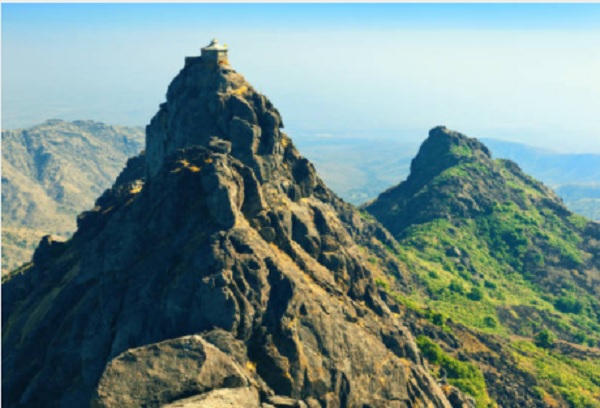
The Girnar Mountain is located in the Gujarat state, the northern and eastern borders of which are either the tails or offshoots of the ranges like the Arawali, the Vindhyas, and the Satpuras. The Girnar is the highest mountain in the state as extension of the Arawali Range recording 1,145 metres as the maximum height with the highest peak named Guru Dattatreya, who was a sanyasi as well as venerated Hindu deity. In some texts like Garuna Purana and Brahma Purana, he is mentioned as an avatar of Vishnu while in some states he is also worshipped as a syncretic deity representing Trimurti . Dattatreya is said to have been born to Anasuya and her husband Sage Atri who is traditionally credited with making a large contribution to the Rig Veda. An important text of Hinduism, namely Avadhuta Gita is attributed to Dattatreya, who is also said to have inspired many monastic movements in Shaivism, Vaishnavism and Shaktism over a period, particularly in the Southern India, Gujarat, Madhya Pradesh, Rajasthan and Himalayan regions.
Some other peaks of the Girnar Mountain are also named after various deities like Gorakhnath, Kalika Mata and Amba Mata. Girnar is not only an ancient hill but also the location of some of the holiest places of other religions too. For illustration, it is also considered as the holy place where the twenty-second Tirthankar Lord Neminath attained nirvana. Similarly, a small hill beside the Girnar is called the Jamial Shah Pir which is considered a Muslim holy place. Among several Hindu temples in the Girnar region, the largest one is dedicated to Damodar, another name given to Lord Krishna. The reservoir Damodar Kund in the temple’s vicinity is also considered very sacred. Another old shrine of Bhavnath, a form of Shiva, is located near Girnar Taleti; and Mrigi Kund and Sudharshan Kund too are in close proximity. Girnar ropeway is still considered as Asia’s longest ropeway on Mount Girnar which connects Girnar taleti to Ambika (Ambaji) Jain temple, a ropeway ride for about ten minutes. Several historical inscriptions of Maurya Dynasty, Gupta Period and others too exist there. Amba Mata temple is yet another venerated ancient place visited by newlyweds to seek the blessings of the goddess for a blissful wedded life. Besides, the Girnar is also characterized with Sadhus’Akharas of various sects.
6. Annamalai or Mountain Arunachala
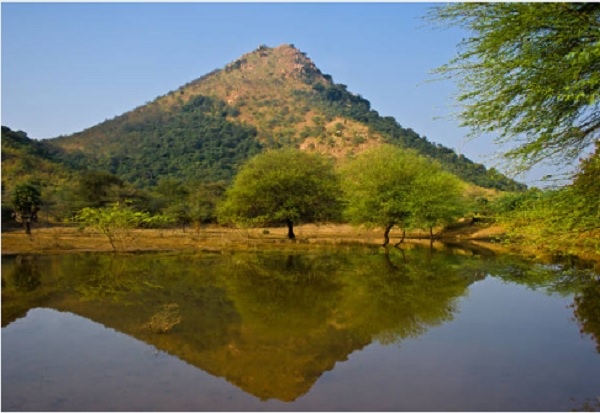
Arunachala or red mountain is another holy hill in Tiruvannamalai, Tamil Nadu falling under the Eastern Ghats, and also one of the five main Shaiva holy places of South India. The hill is remembered by several names such as Annamalai, Arunagiri, Arunachalam, Arunai, Sonagiri and Sonachalam, and the famous Shiva temple is located at the base of the hill itself. The Arunachalesvara temple is one of the five Shiva temples (Pancha Bhoota Stalams) said to be each manifestation of a natural element, namely earth, water, air, sky and fire. Here in Arunachalesvara, Shiva is believed to have manifested Self as a massive column of fire and the main lingam in the shrine is referred to as Agni Lingam. The temple is also significant for its massive gopurams, some of which are as high as sixty-six metre. Traditionally, the place has been a favourite destination of many Shaivite saints and followers and even Sri Ramana Maharshi lived in a cave on the south-east slope of Arunachala for nearly two decades. The glory of Arunachala has been described in a great detail in the Maheswara Khanda of Skanda Purana by sage Veda Vyasa. The Arunachala Mahatmyam can be learnt from the following quote:
"By seeing Chidambaram, by being born in Tiruvarur, by dying in Kasi, or by merely thinking of Arunachala, one will surely attain Liberation."
According to an ancient legend, once a dispute arose between Brahma the creator and Vishnu the preserver about which of them was superior. To settle the dispute between the two gods, Shiva is said to have manifested self as a massive column of flame and dared both the gods to map his sources of origin and end. Accordingly, Brahma is said to have taken the form of a swan and flew in the sky to find the top of the flame. On the other hand, Vishnu acquired the form of a Varaha (boar) to dig and find the origin of the flame. Needless to mention, none of the two gods could fathom the height and depth of the flame and the dispute ended. The said scene is called Lingothbava and represented in the western wall at the sanctum of the main temple. Performing Pradakshina (circumambulation) of the temple and Annamalai hill is considered pious and beneficial by the pilgrims and, accordingly, the devotees engage in the practice called giri valam i.e. circumambulation of Annamalaiyar temple and Annamalai hill total 14 km in circumference, most of them bare-footed.
7. Velliangiri
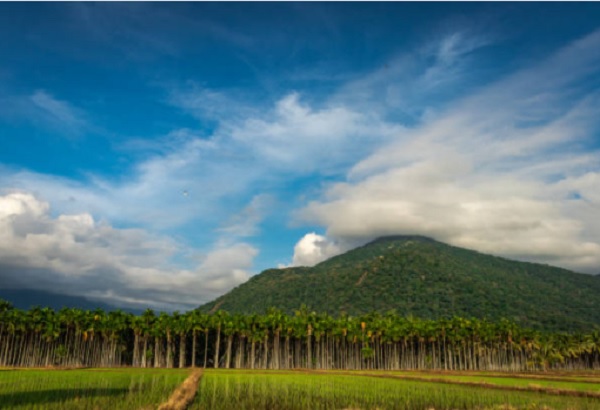
The Velliangiris is located in the Coimbatore district of Tamil Nadu bordering the Palakkad distric of Kerala as part of the Western Ghats. These hills are traditionally also known as Sapthagiri (seven hills) and are revered in the South India almost same way as Mount Kailash in the North Himalayan Range. The top of the Velliangiri Mountain is considered spiritually most powerful, where Shiva is worshipped as Swayambhu (Self-created) by the devotees coming from various parts. Many legends are associated with the place. According to a legend in the Kachiappar Perur Purana, once Vishnu worshipped Shiva at Kailayam (Mount Kailash), who, in turn, asked the former to seek a wish from him. Vishnu expressed his earnest desire to see Shiva’s graceful dance (Aananda Thaandava), to which Shiva replied that only two sages Patanjali and Vyaghrapada had displayed some virtues in the past, thus they became entitled to see his dance in Vellinangiri. Complying Shiva’s advice, Vishnu went to the southwest of Velliangiri hills wearing Rudraksham to worship Shiva again, who thus there obliged him with his Aananda Thaandava.
Among many temples in the hilly terrains of Tamil Nadu, the Shiva temple of Velliangiri in the western part is considered as most famous and pious. It is remembered with various names such as Rajathangiri, Velliangiri, Bhoolok Kailash or Dakshin Kailash and is said to be the pious place where Shiva performed his cosmic dance on the request of the consort Uma. The five faces of Shiva depicted as Brahma, Vishnu, Rudra, Maheshwara and Sadasiva symbolizing Panchagiri and Panchalingas representing panchahutas are also present in Velliangiri with the hills rich in natural resources and valuable herbs. To seek the blessings of God Panchalingas (Shiva) and consort Manonmani Amman (Parvati), hundreds of thousands devotees throng the place annually, more particularly between February and May. Another interesting legend is associated with the place; Once Vayu Deva and Adiseshan, Vishnu’s attendant had a dispute about who was superior between them. To prove the point, Adiseshan encircled Kailasam (Mount Kailash) and Vayu tried to remove his encircle by creating Santamaruthan (twister). Due to this violent twister, eight Kodumudigal (parts) from Kailasam fell to eight different places, of which Rajathagiri at the Velliangiri Mountains was one.*
8. Shivagange Peak
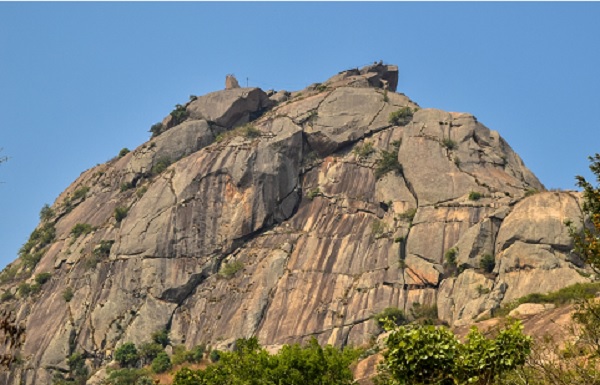
It is a mountain peak with a height of about 1,300 metre in the Bengaluru Rural district of Karnataka. The Shivagange hills are part of the Western Ghats and the sacred peak is shaped like a Shivalinga. Besides, a spring flows in the nearby locality called "Ganga"; hence the name Shivagange given to the place. Another name given to the place is Dakshina Kashi i.e. Kashi of the South, which has many temples such as Gavi Gangadhareshwara Temple, Sri Honnammadevi Temple, Patalagang Sharadambe Temple, Nandi Statue, and theerthas like Olakal Teertha, Agasthya Teertha, Kanva Teertha, Kapila Teertha, Pathala Gange, and so on. Both Gangadhareshwara Temple and Sri Honnammadevi Temple are located inside the cave; Gavi signifies a cave, Gangadhareshwara means Ishwar (God Shiva) bearing Ganga on the top and Honnammadevi is Shiva’s consort Parvati.
Shiva devotees have an age old belief in a miracle that occurs when Abhisheka is performed on Shivalinga with pure ghee which acquires medicinal powers capable of curing many ailments. There is also a belief that a secret tunnel exists from the Garbha Griha (sanctum sanctorum) of this temple to the Gangadhareshwara Temple in Bengaluru, which is about 50 kilometres away. The Sankranti festival in January every year is marked with a large congregation of pilgrims, when the marriage ceremony of Sri Gangadhareshwara and Sri Honnammadevi is conducted. It is believed that the holy Ganga water flows down from the rock at the top of the hill at that time which is used to solemnize the Dhare ritual in the marriage ceremony. Shivagange hills are also a site of the origin of River Kumudvathi and a popular site for the rock climbing in the state. To facilitate climbers, the entire trail is well marked up to the peak with the man made steps carved into the rocky terrain.
9. Agastya Mala
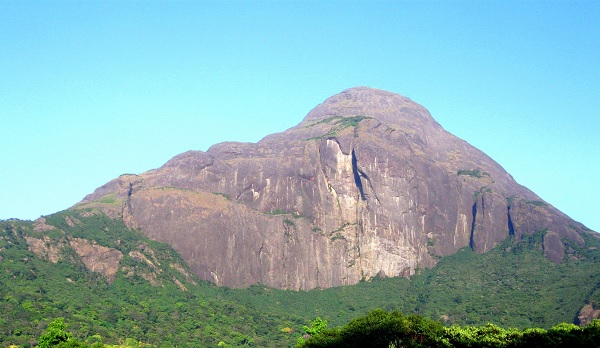
Agastya Mala or Agasthyarkoodam is about 1,868 metres tall peak in the Western Ghats on the border between the Thiruvananthapuram district of Kerala and Tirunelveli district of Tamil Nadu in South India. The peak comprises of the Agasthyamala Biosphere Reserve where the perennial Thamirabarani River originates on the eastern side of the range to flow into the Tirunelveli. After Sage Agastya migrated to South India, it is believed that he had established his new permanent Ashram in Agastya Mala and never ever returned to north. Sage Agastya was one of the famous seven rishis (Saptarishi) of the Vedic Sanatana culture. In Tamil traditions, Agastya is reckoned as the father of Tamil language as also compiler of first Tamil grammar Agattiyam. At the top of the peak, a stone statue of the sage is present, who is better known as Agathiyar in Tamil traditions.
Agasthyamala Biosphere Reserve is listed among the UNESCO’s World Network of Biosphere Reserves since March 2016 with its rich diversity of nearly three hundred rare birds and over two hundred medicinal plants and herbs. In the past, women were forbidden to climb Agastya Mala but after a court decree in November 2018 such prohibition has been lifted and women of all ages can also climb the peak. The peak of Agastya Mala could, however, be scaled only by trekking which is open for eligible pilgrims from January to mid-March every year. The trekking is undertaken from Bonacaud which is about fifty kilometer from Thiruvananthapuram and can be reached by any private or public transport. The twenty kilometer trek is usually completed in two days with an overnight halt at a forest camp.
10. Kalsubai Shikhar
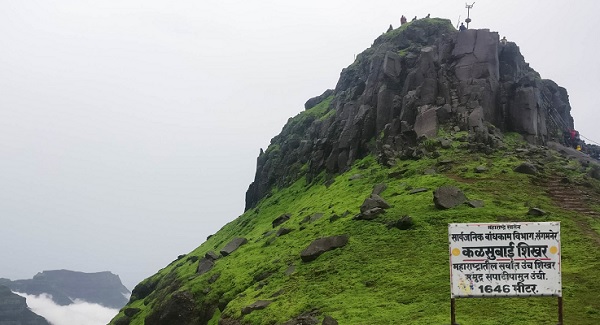
Kalsubai is a mountain peak of approximately 1,646 metres in the Ahmadnagar district of Maharashtra state as integral part of the Western Ghats. The peak lies within the Kalsubai Harishchandragad Wildlife Sanctuary, which along with Kalsubau Temple offers enough space and interest for the wildlife lovers, trekkers and devotees, who constantly throng the place during the year. Kalusubai is about 6.6 km trek with moderate stress level to scale an elevation of about 820 metres with lush green surroundings, waterfalls and beautiful landscape. Kalsubai is a local deity but revered by trekkers and devotees alike who invariably visit the small temple in the area. Some other places of tourist attraction in the surrounding areas are Arthur Lake, Umbrella Fall and Ratanwadi temple.
* Other 7 kodumudigal (parts) being Thirugonamalai (Trincomalee), Thirukalahasti, Thiruchiramalai, Thiruenkoimalai, Neerthagiri, Ratnagiri and Swethagiri or Thirupangeeli
Postlude
One may find it quite intriguing that the Mount Kailash, the abode of the most mystic and venerated Adiyogi Shiva and his family currently falls under the territory of China. Hinduism is the oldest surviving religion, and the Kailash has been cited as the eternal abode of Shiva even in the ancient scriptures; the peak is even marked with Adiyogi’s protruding face. A serious contemplation only suggests that the region must have been a part of the integrated Indian Sub-continent and culture in the past and the present occupation of Tibet, Mount Kailash and designs to constantly nibble on the neighbour’s territories on land and sea only represent the insatiable greed for power, hegemony and expansion of the communist regime of China.
Also, the aforesaid description of the sacred mountains is only illustrative and not inclusive. In fact, the Indian epics, puranas and other texts mention numerous mountains and hills which are sacrament and reverential due to association with the particular deity or cultural event or even the mountain itself has been personified such as the mighty Himalayas and Vindhyachal. All such mountains, places and associated deities cannot be accommodated in a short piece, but the illustrations are sufficed to indicate how the Sanatana (Hindu) culture views creations of the nature and Almighty God. This also gives an indication how the dark side of human face viz., vices and diabolic activities have adversely changed the face of earth with the passage of time.
Continued to Next Page
Images (c) istock.com
11-Dec-2021
More by : Dr. Jaipal Singh